
Ron Landis’ love affair with the arts began as a child when he first became fascinated with coins and engravings. During his school years, Ron explored many facets of crafts and arts and won a Blue Ribbon in the Scholastic Arts Awards his senior year for a heavily ornamented banjo he built in school. It was that interest in building banjos that led him to pursue the art of hand engraving so he could apply those skills to further ornament the instruments he wanted to build.
Ron attended Gem City College in Quincy, Illinois, in the late 1970s, where he learned watch repair, diamond setting and hand engraving. From there, he returned to his hometown of Denver, where he apprenticed for a short time under the late George Bickley, a highly respected jewelry engraver.
Ron operated his own jewelry engraving shop for a few years before he was talked into sharing a booth at the Colorado Renaissance Fair with a seamstress who planned to make hats. Wanting to keep his wares on display there in theme with the festival, Landis offered custom-engraved wax seals and learned how to sculpt backwards into metal so the wax impressions it made would be three-dimensional – just like on coins. That led him to realize that if he could engrave steel in the same manner, he could somehow make souvenir coins from those engravings. So he soon took a short walk to his local scrap yard with graver in hand, and after a few cuts into the end of a round bar, he purchased it for $1 – which was his initial investment into what would become a lifelong pursuit.
Landis then acquired a small fly press from one of his engraving clients, who traded for $25 worth of engraving. For the next ten years, that press was used to strike souvenir medals at numerous Renaissance Festivals all across the United States. In an effort to make his coin-making demonstration more interesting and more authentic to the Renaissance period, Ron added more equipment such as rolling mills, intaglio printing press, and an early-style edge mill that he built from scratch to apply lettered edges to his medallions.
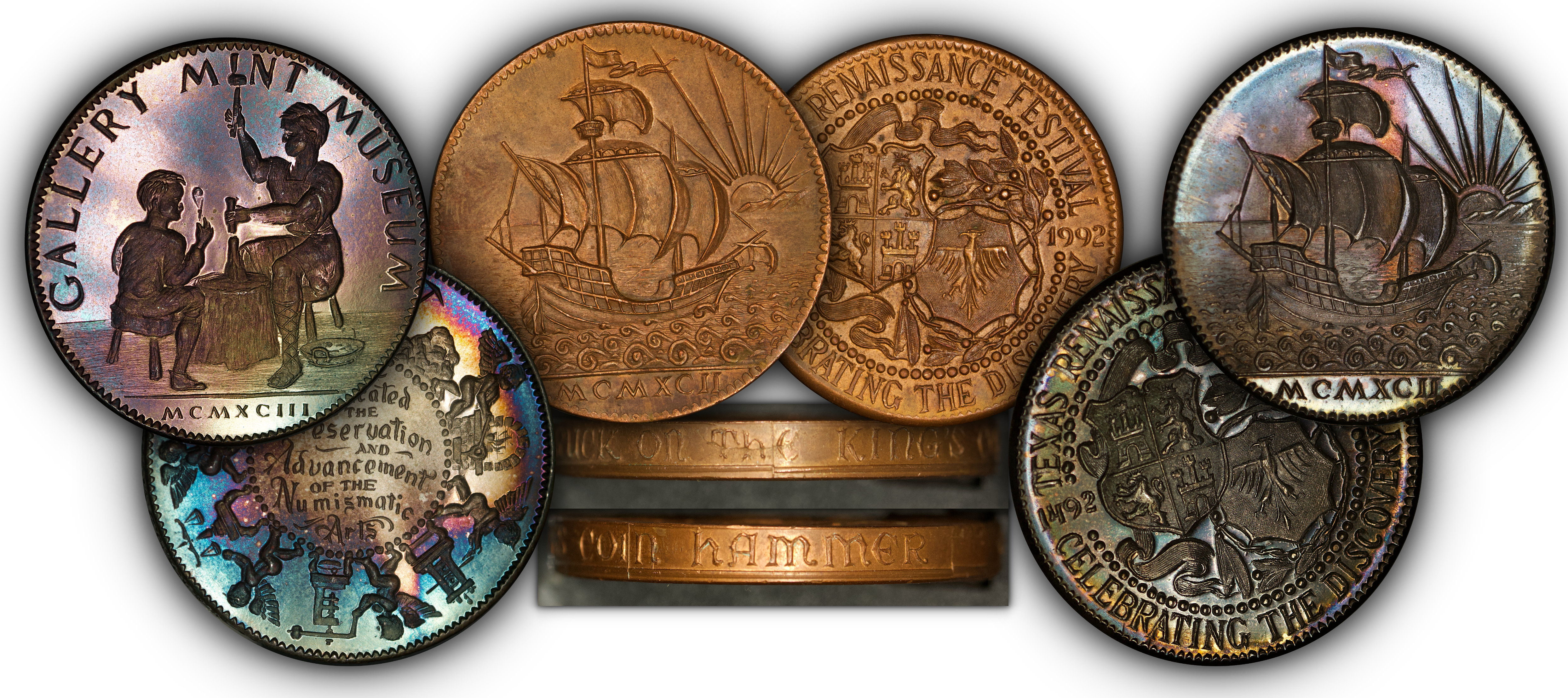

His attention to detail and his studies of early mint technologies garnered the attention of the late Dr. Richard Doty, senior curator of the Smithsonian Institution’s National Museum of American History. Doty recommended Ron for an enormous project underway in Segovia, Spain: to restore the ruins of the 16th Century Royal Mint of Spain. Ron assisted in that effort from 1988-89 with conceptual drawings and plans that were eventually employed to restore the ruins of the Royal Mint into a museum of coin-making.
Ron's passion for learning about early coin-making methods
rew. From 1989-90, he built a 1200-square-foot demonstration for the Texas Renaissance Festival featuring a water wheel that pumped bellows for the melting furnace and powered rolling mills similar to the kind used in Segovia, Spain. The comprehensive demonstration explained coin-making methods of Ancient Greece and the Renaissance Period, when new mechanical inventions began to appear on the scene. He also built a large drop hammer – a fantasy machine of his own design – and struck limited-edition silver medals with raised lettering around the edge.
The Renaissance Mint provided the impetus for machinist Joe Rust to become interested, so Ron and Joe formed a partnership and decided their efforts would be better served as a stand-alone attraction away from the theme park setting. In 1992, they moved to Eureka Springs, Arkansas, with the goal of building a museum of minting technology. The resulting Gallery Mint Museum quickly gained the attention of coin collectors and numismatists around the world who were excited to explore the new information and methods resulting from the partners' trial-and-error research into die sinking and coin manufacturing, and how it evolved through the ages.
Gallery Mint was mostly noted for its high-quality reproductions of early U.S. and Colonial coins made using the same methods as were used long ago to create the originals. In this manner, Ron and Joe could gain more insight into the subject through actual hands-on experience with given methods. The two were able to form a greater understanding of a subject that had historically been suppressed for obvious reasons. All Gallery Mint reproductions carry a COPY stamp as mandated through the federal Hobby Protection Act
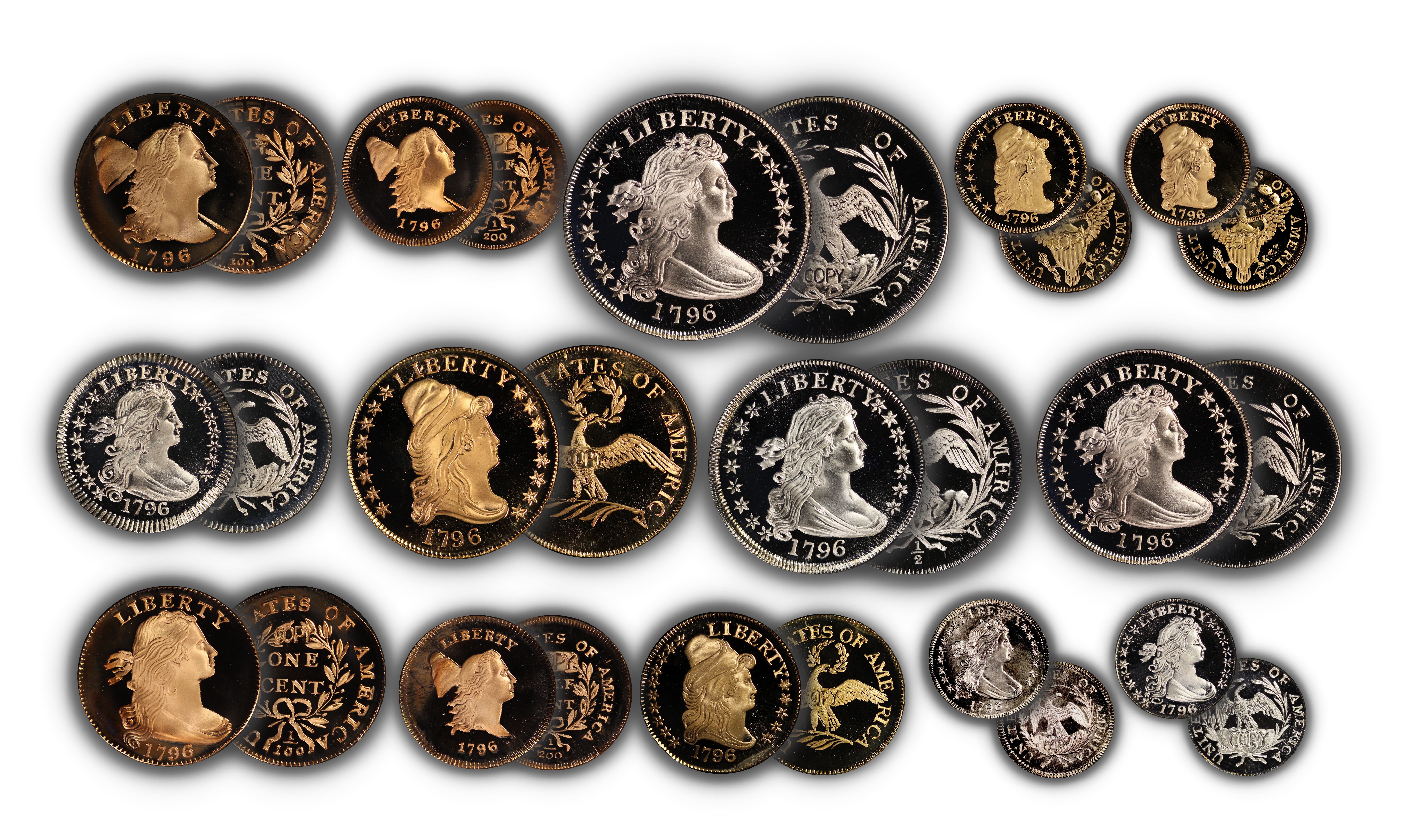
Highlights of Ron's career include the designing and making of prototypes that were distributed to members of Congress during their discussion of legislation for the new "Golden Mini Dollar" being proposed. Two previous bills to create a new dollar coin to replace the Susan B. Anthony had failed. Many have credited Ron’s prototypes with leading to the passing of legislation to create the new coin.
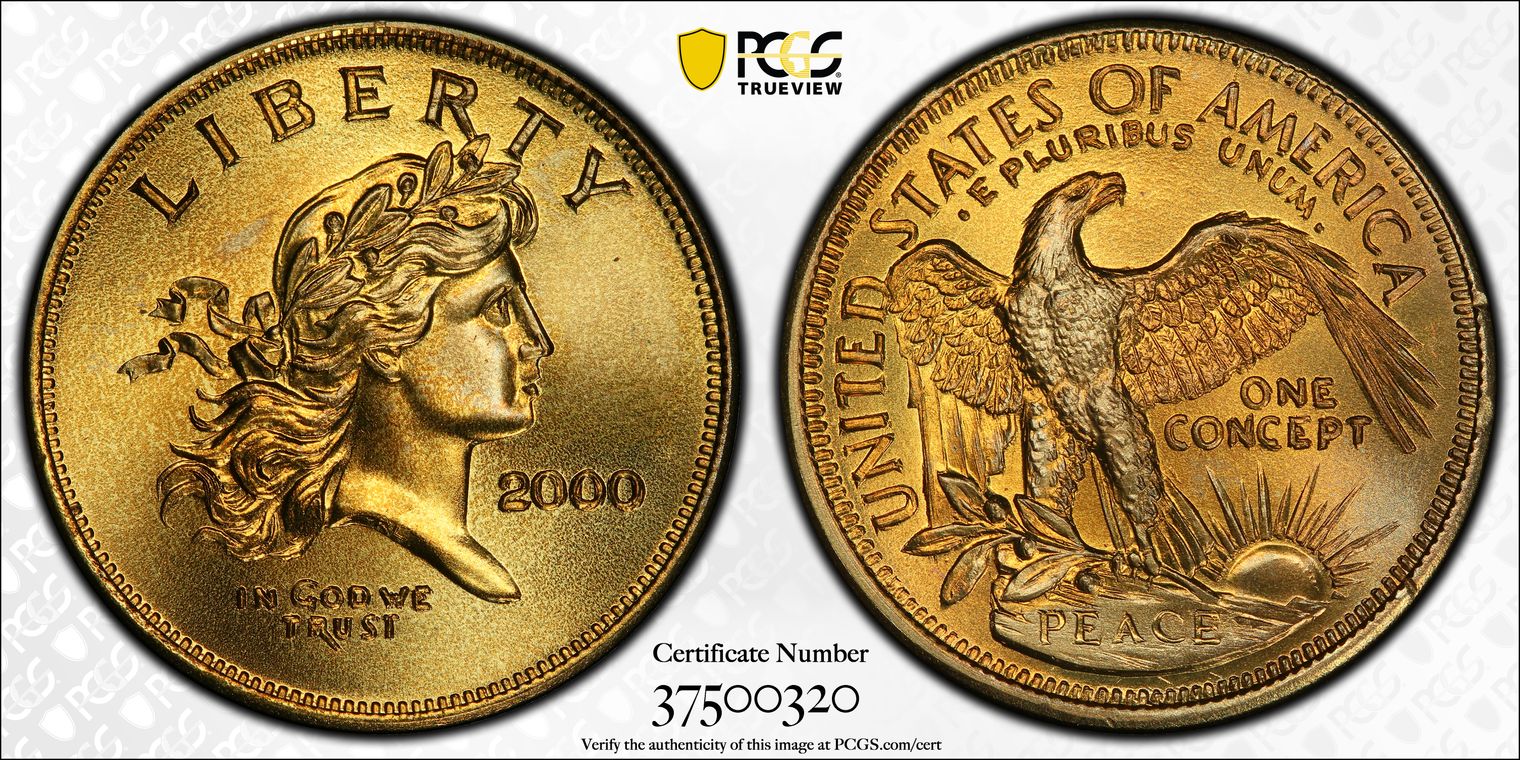
Although Ron's classic Liberty Head design was the 80% favorite among coin collectors, the concept of Lady Liberty was not chosen. He received a standing ovation for his plea to the design commission in Philadelphia, but it was decided that Sacagawea was to be the subject on the new coin. Ron was invited by the U.S. Treasury to submit designs for the Sacagawea Dollar, along with several other designers.
Ron is also known in some circles as the "Grandfather of the Modern Hobo Nickel Movement.” His interest in this obscure folk art prompted him to see if he could alter nickels into more creative and artistic creations than the standard Bearded Man with Hat themes of the traditional Hobo Nickels. For three years, Ron was the only one carving coins in high quality. The art had almost died out completely when Ron tried to transform it into something more like medallic sculpture as opposed to folk art. Slowly, other engravers of various levels joined in. Today, there are countless people around the world engaging in the art, using all kinds of coins and employing advanced skills and methods combined with brilliant new concepts.
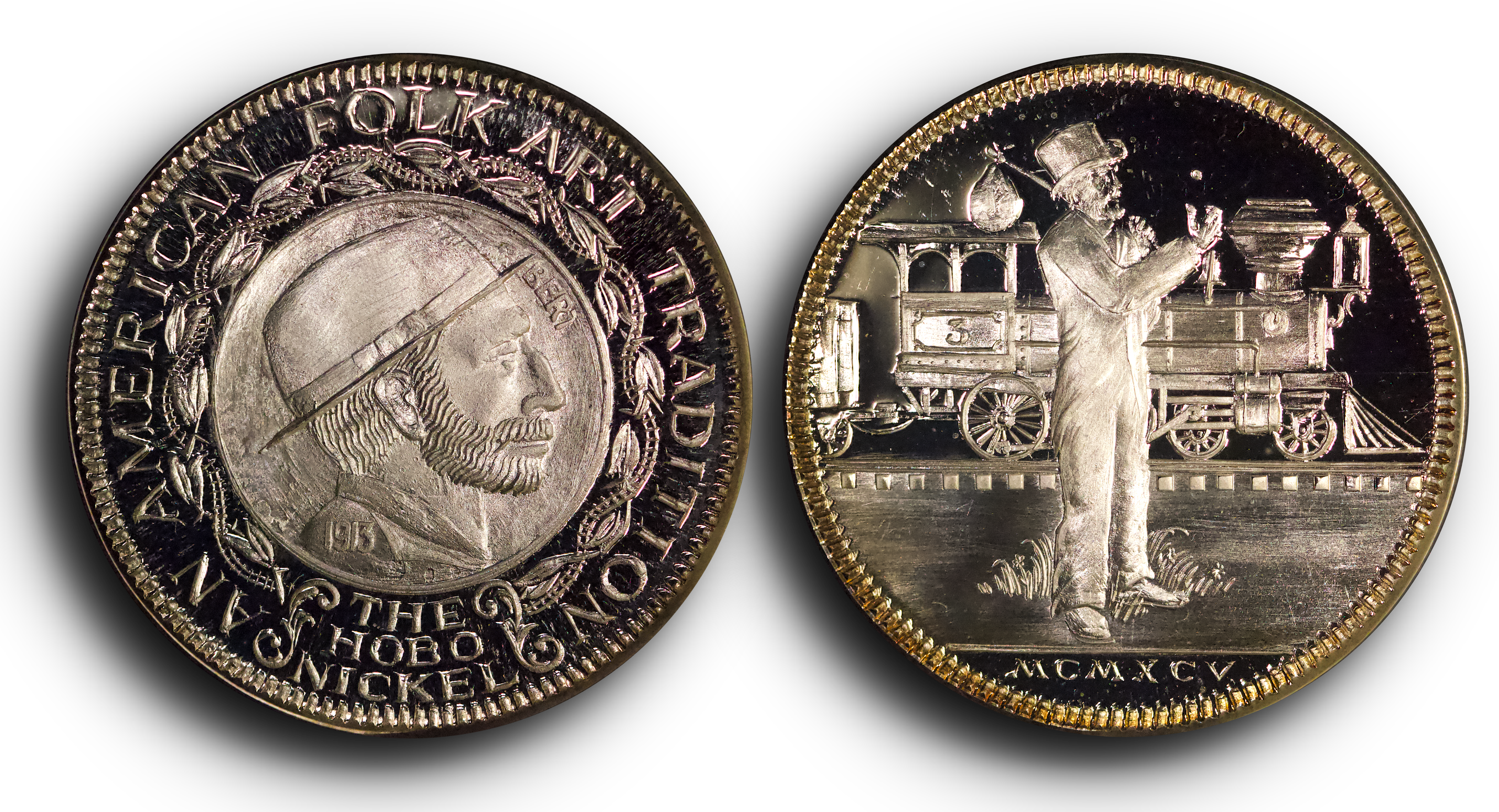
In 2005, Ron lost his beloved friend, Joe Rust, who had long been Ron’s partner in business and in music.
Three years later, Ron had a car accident. The series of events caused a domino effect, and he suffered severe depression, which lasted for several years. Now, after a heart operation and plenty of good music, Ron is back with renewed optimism and more creative ideas than ever before.
The newly formed Landis Studios is joined by his old friend, Mr. Timothy Grat, a machinist with engineering skills and coin-making experience too vast to list in this already too long page. Together they plan to develop and produce exciting new products as Landis Studios.

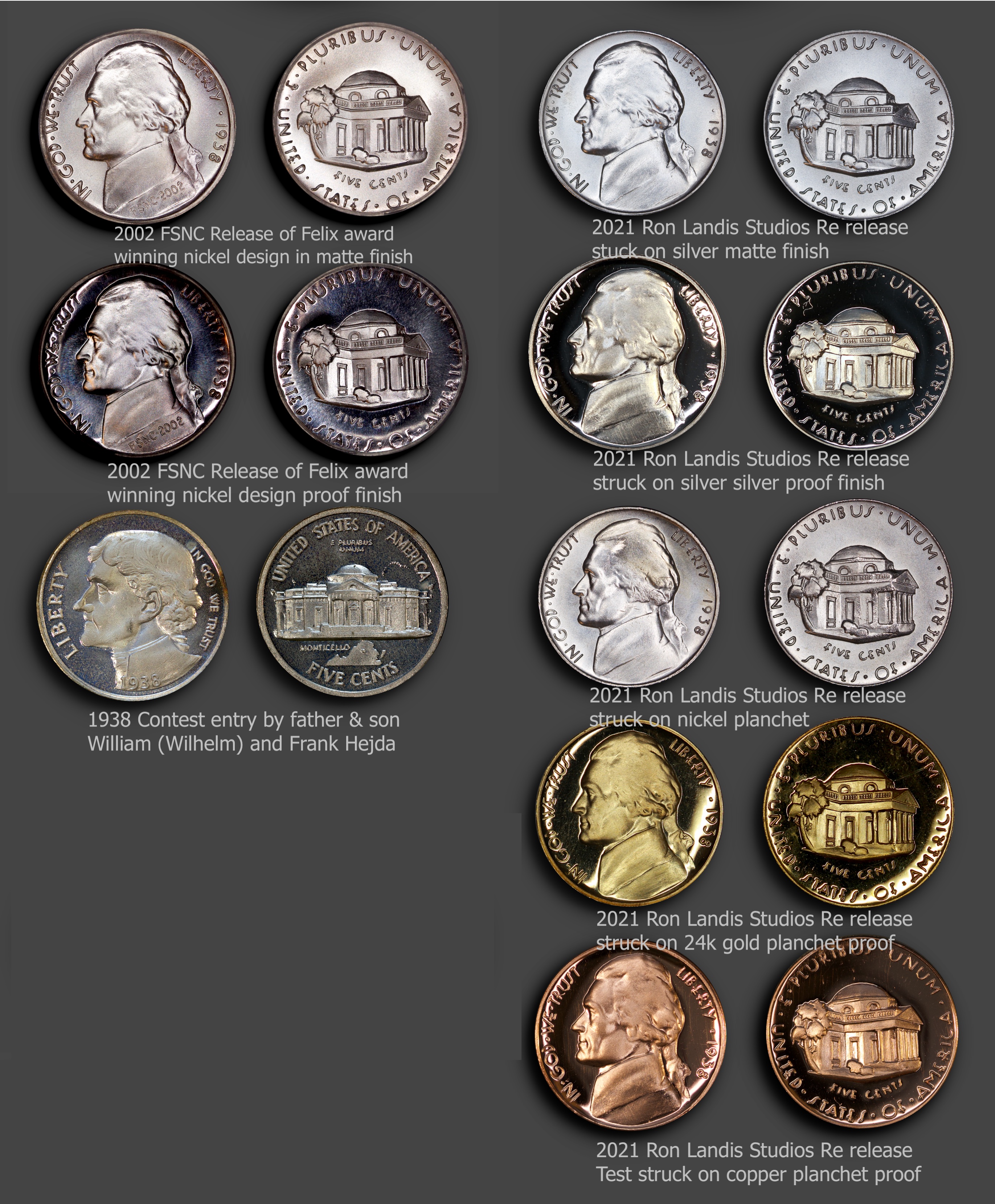
Struck on genuine US Mint 5 cent nickel planchet.
But was available in
Silver, Copper &Gold
Mr Landis was proud to announce the re-release of the Jefferson fantasy nickels that were first released in 2002 by the Full Step Nickel Club.
The first edition was scheduled for a mintage of 1,938 sets struck in silver as two piece sets in Proof and Matte finishes. Only 730 sets were produced and encapsulated by SEGS which left the mintage open for 1,208 additional sets.
The design was Felix Schlag’s winning design in the Jefferson Nickel design competition but was never produced as Mr. Schlag had intended. Instead, the lettering was changed along the the view of Jefferson’s home, Monticello. These fantasy strikes illustrate the Jefferson Nickel the way the artist had originally intended before the Mint made their alterations.
The first edition had the initials FSNC 2002 to indicate they were produced under the auspices of the Full Step Nickel Club in 2002.
For the Landis Studios editions, those markings were removed, thus making them a more attractive than the original edition.We don’t plan to complete the mintage with 1,208 more sets, but for now we’re releasing 100 two-piece silver sets along with an extremely low mintage of only 40 pieces struck on genuine U.S. Mint nickel planchets. They come in a standard 2 X 2 flip with insert cards that are signed by the engraver, Ron Landis and numbered. There are a total of 17 strikes in gold as of 8/9/22

